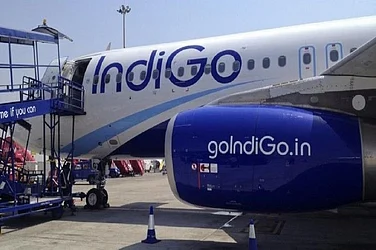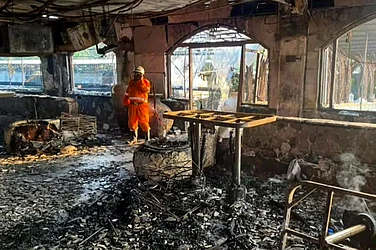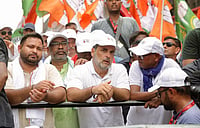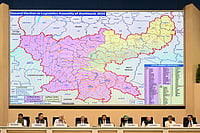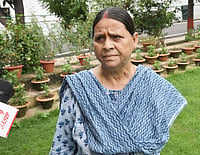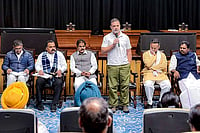
With 24 days left for Bihar’s first phase of polls, Prashant Kishor’s Jan Suraaj became the first party to announce candidates — releasing a list of 51 names even as the NDA and INDIA blocs remain stuck on seat-sharing talks.
The list reflects a focus on caste and community balance — 17 EBCs, 11 OBCs, 9 from the general category, and 7 Muslims — along with fresh, mostly first-time candidates, including Karpoori Thakur’s granddaughter and a transgender candidate.
Analysts say Jan Suraaj’s move energizes Bihar’s political scene but is unlikely to majorly dent the traditional vote bases of either bloc, estimating the party’s vote share may stay under 10%.
As Bihar heads toward a high-stakes Assembly election, Prashant Kishor’s Jan Suraaj has taken a decisive early lead, becoming the first party to announce its list of candidates — even as the major alliances, NDA and INDIA, have not announced names
The Election Commission of India announced on October 06 that the Bihar Assembly polls would be held in two phases, on November 06 and 11 — with results to be declared on November 14.
While both alliances continue to hold rounds of internal meetings, Jan Suraaj, the new political Party founded by Prashant Kishor has surprised everyone by releasing its first list of 51 candidates on October 09, only 3 days after the official poll announcement.
For a party barely two years old, often criticized for lacking sufficient candidates, announcing its list ahead of everyone else carries significant political meaning.
According to sources, the 51 seats where Jan Suraaj has fielded candidates are constituencies where both RJD and JD(U) nominees under the INDIA and NDA alliances are likely to be finalized. Hence, Jan Suraaj made an early move on those seats while adopting a “wait and watch” approach for the rest, depending on how the big alliances settle their nominations.
Ashish Ranjan, founder of the Data Action Lab for Emerging Societies, notes that Jan Suraaj’s 51 names were part of its “core stock” — members who had been working with the party for nearly two years and could have drifted away if the list had been delayed further. He explains, “Around 50% of candidates in every party are fixed early on. Parties know that around 20% rebellion is inevitable during elections. Prashant Kishor’s first 51 candidates were his stable team members. Now the party is watching how other alliances move on their ticket distribution.”
Jan Suraaj appears to have ensured caste balance while selecting candidates — emphasizing representation for the Extremely Backward Classes (EBCs) and Other Backward Classes (OBCs). Muslims, too, have been given a fair share, signaling an effort to project the party as inclusive and socially diverse. Most of these candidates are political newcomers, indicating a deliberate strategy to bring in fresh faces.
Out of the 51 candidates, 17 belong to the EBC category, 11 are OBCs, 09 come from the general category, and 07 are Muslims. The most talked-about names in the list include former Chief Minister Karpoori Thakur’s granddaughter, Jagruti Thakur, contesting from Morwa in Samastipur, and a transgender Preeti Kinnar, a candidate from Bhore constituency in Gopalganj. Overall, Jan Suraaj’s first list covers 30 out of Bihar’s 38 districts.
The party says it does not believe in mere slogans of inclusion but it aims to reflect social participation in actual ticket distribution.
According to Jan Suraaj’s state general secretary Sarwar Ali, the second list will be released by October 13 and will include 15–16 Muslim candidates. He reiterated Prashant Kishor’s earlier promise that the party will give 40 tickets each to Muslim and women candidates across Bihar’s 243 constituencies.
If this happens, the big question is whether Jan Suraaj will be able to dent the Muslim vote base of the INDIA alliance and the women’s vote bank associated with Nitish Kumar.
Political analyst Ashish Ranjan believes that while Prashant Kishor will remain a “factor” in the elections, he is unlikely to make a major dent in either bloc’s traditional bases. “About 70–80% of Muslim votes will still go to the INDIA alliance. The remaining 20–30% may shift depending on the candidates. Jan Suraaj will not significantly impact the MY (Muslim–Yadav) vote. As for women voters, Nitish Kumar’s direct cash transfer schemes still give the NDA an upper edge,” he says.
Ranjan estimates that even if Jan Suraaj manages to win 10–15 seats, its total vote share may not cross 10%. He adds that most of its potential winners would likely be those who failed to secure tickets from BJP, JD(U), RJD, or Congress, and later joined Kishor’s party as an alternative platform.
Jan Suraaj’s early announcement of 51 candidates has injected fresh energy into Bihar’s political scene, positioning the party as a proactive third front. By emphasizing caste balance, inclusion, and new leadership, Prashant Kishor has tried to project an image of clean, grassroots politics. Yet, analysts suggest that while the move is strategically sound, its impact on the deeply entrenched vote bases of the INDIA and NDA alliances may be limited. The coming weeks will test whether Kishor’s experiment can translate early momentum into meaningful electoral gains.









.png?auto=format%2Ccompress&fit=max&format=webp&w=768&dpr=1.0)



